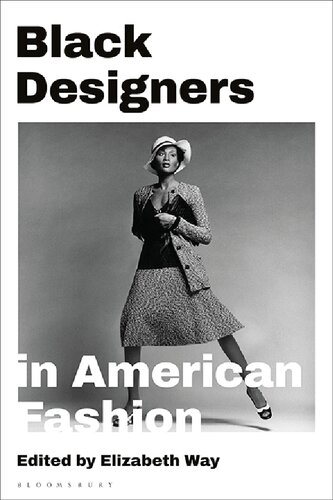
Black Designers in American Fashion PDF
289 Pages·2021·4.806 MB·English
Most books are stored in the elastic cloud where traffic is expensive. For this reason, we have a limit on daily download.
Preview Black Designers in American Fashion
Description:
From Elizabeth Keckly’s designs as a freewoman for Abraham Lincoln’s wife to flamboyant clothing showcased by Patrick Kelly in Paris, Black designers have made major contributions to American fashion. However, many of their achievements have gone unrecognized. This book, inspired by the award-winning exhibition at the Museum at FIT, uncovers hidden histories of Black designers at a time when conversations about representation and racialized experience in the fashion industry have reached all-time highs.In chapters from leading and up-and-coming authors and curators, Black Designers in American Fashion uses previously unexplored sources to show how Black designers helped build America’s global fashion reputation. From enslaved 18th-century dressmakers to 20th-century “star” designers, via independent modistes and Seventh Avenue workers, the book traces the changing experiences of Black designers under conditions such as segregation, slavery, and the civil rights movement. Black Designers in American Fashion shows that within these contexts Black designers maintained multifaceted practices which continue to influence American and global style today.Interweaving fashion design and American cultural history, this book fills critical gaps in the history of fashion and offers insights and context to students of fashion, design, and American and African American history and culture.Black Designers in American Fashion is one of the few scholarly volumes to date to explore the careers and cultural contexts of Black fashion makers from the eighteenth century to the late-twentieth century. The book is divided into four sections. “Anonymous Histories” traces eighteenth, nineteenth, and early twentieth-century Black fashion makers whose largely uncredited work has contributed to a legacy of Black American fashion design that reverberates into the twentieth-first century. “In the Atelier: Modistes and Independent Designers” examines Fannie Criss, Ruby Bailey, and Art Smith. They were artisans who operated autonomous shops during the early-to-mid twentieth century, producing fashion, art, and jewelry, respectively.While their production methods existed outside the industrialized fashion system, they incorporated fine craftsmanship and introduced innovation into their practices. “Into the Mainstream: Seventh Avenue and Beyond” focuses on Wesley Tann, Jay Jaxon, and Dapper Dan, influential designers working within or adjacent to the mainstream fashion industry during the second half of the twentieth century, some for themselves, others for manufacturers and brands. “The Star Designer: National and International Impact” contextualizes the careers of the relatively well-known designers Stephen Burrows, Scott Barrie, Willi Smith, and Patrick Kelly.The book’s authors represent a range of fashion historians, including professors, curators, and independent scholars, who have utilized a wide variety of sources, from extant garments, archival records, historic newspaper advertisements, slave narratives, and new oral histories to delve into the careers and design practices of the Black fashion makers who have shaped fashion culture and the American fashion industry.
See more
The list of books you might like
Most books are stored in the elastic cloud where traffic is expensive. For this reason, we have a limit on daily download.
